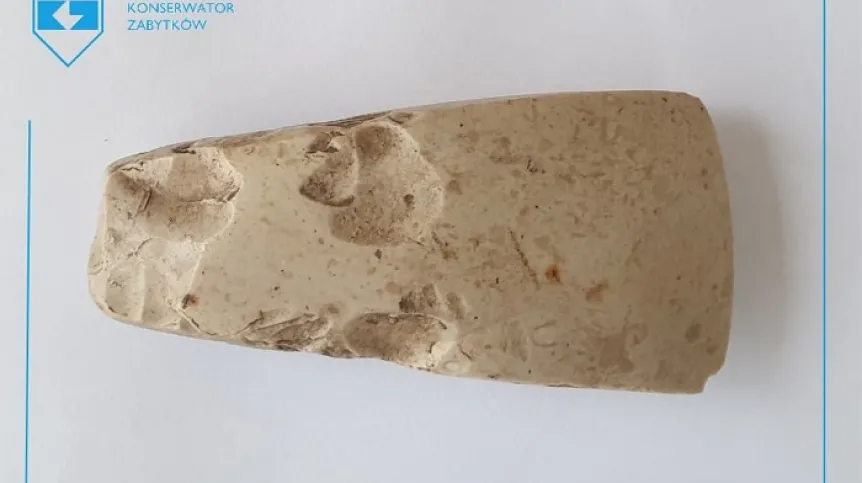
The Masovian Provincial Conservator of Monuments announced a sensational find in Józefów near Legionowo. While gardening, a mother and child found a Neolithic axe.
Masovian conservator Marcin Dawidowicz told PAP that the axe was found by accident and that, according to the information he had, the axe was not found in local soil but in material brought from another place.
'Such finds are rare and we are impressed that someone had enough intuition to identify it as a monument and notify the conservator', Dawidowicz said.
'The dating of the object itself and the fact that it is a Neolithic axe is very impressive. For the average person, it is a unique and very valuable thing', he continued, adding that the office would like to reward the finders.
According to Joanna Gawrońska from the Provincial Office for the Protection of Monuments in Warsaw, the artefact is a flint axe tentatively dated to the end of the third millennium BCE and associated with the late Neolithic Corded Ware culture.
'The flint raw material is difficult to identify (perhaps it is erratic flint). Traces of shaping have been preserved on the surfaces, the blade has been smoothed', Gawrońska said.
'Artefacts of this type are found in Poland as loose finds or in a grave context (as part of grave goods). Two similarly dated axes were found accidentally two years ago in the Sobienie Jeziory commune, Otwock disctrict', she added.
The Corded Ware culture was initially distinguished based on the characteristic way of decorating pottery with an imprinted cord, from which its name originated. It was formerly called the battle axe culture due to the large number of axes found in graves.
'The flint raw material is difficult to identify (perhaps it is erratic flint krzemień narzutowy). Traces of shaping have been preserved on the surfaces, the blade has been smoothed', Gawrońska said.
Phenomena characteristic of the Corded Ware culture can be found in the area stretching from southern Scandinavia to the Alps and the eastern Carpathians between the Rhine and the middle Volga. In Poland, the largest concentrations occur in Silesia, Kujawy and southern and south-eastern Lesser Poland. (PAP)
PAP - Science in Poland, Marta Stańczyk, Magdalena Barcz
mas/ aszw/ bar/ kap/
tr. RL













